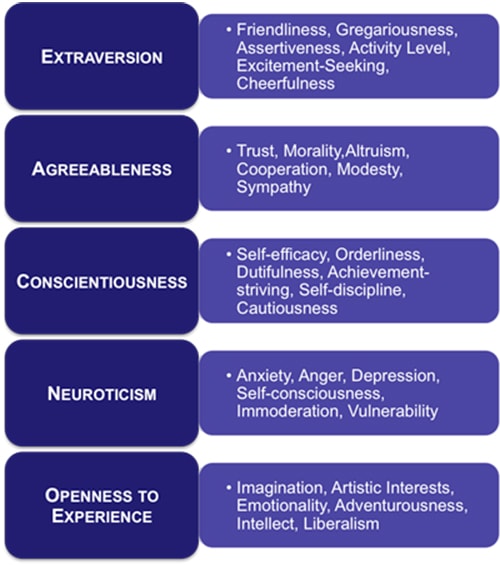The “big five” are broad categories of personality traits. While there is a significant body of literature supporting this five-factor model of personality, researchers don’t always agree on the exact labels for each dimension. However, these five categories are usually described as follows:

- Extroversion
Extroversion is characterized by excitability, sociability, talkativeness, assertiveness and high amounts of emotional expressiveness. People who are high in extroversion are outgoing and tend to gain energy in social situations. People who are low in extroversion (or introverted) tend to be more reserved and have to expend energy in social settings.
- Agreeableness
This personality dimension includes attributes such as trust, altruism, kindness, affection and other prosaically behaviors. People who are high in agreeableness tend to be more cooperative while those low in this trait tend to be more competitive and even manipulative.
- Conscientiousness
Standard features of this dimension include high levels of thoughtfulness, with good impulse control and goal-directed behaviors. Those high on conscientiousness tend to be organized and mindful of details.
- Neuroticism
Neuroticism is a trait characterized by sadness, moodiness and emotional instability. Individuals who are high in this trait tend to experience mood swings, anxiety, moodiness, irritability, and sadness. Those low in this trait tend to be more stable and emotionally resilient.
- Openness
This trait features characteristics such as imagination and insight, and those high in this trait also tend to have a broad range of interests.
People who are high in this trait tend to be more adventurous and creative. People low in this trait are often much more traditional and may struggle with abstract thinking.












